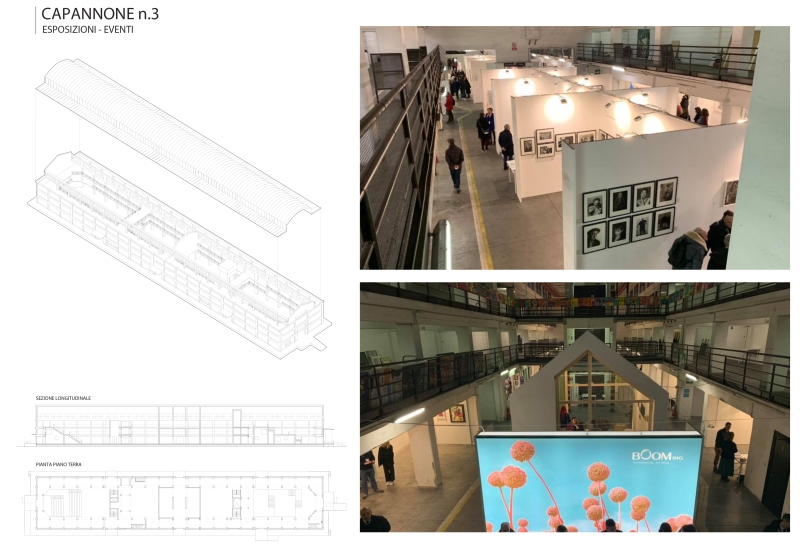Fig.
1 - Former Ravone railway station, Bologna. The real estate market
crisis lends itself to the adoption of an incremental value building
process where "temporary use" of unused existing buildings constitutes
a brand new starting point. .
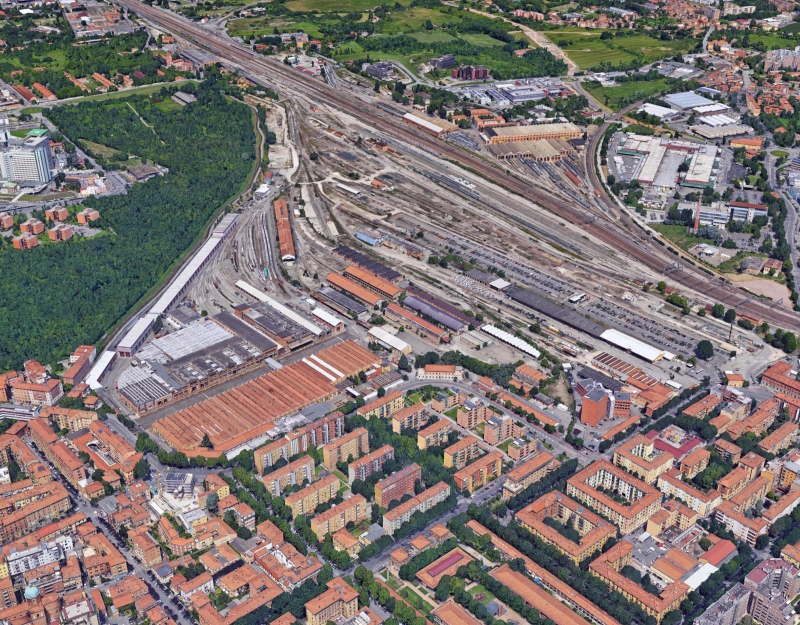
Fig.
2 - The "Temporary Use Master Plan" is the new governance tool shared
with local Administrations, used to identify "vocations" for the single
vacant buildings based on relative intrinsic characteristics. Within
the assigned perimeter, the correspondence between closed spaces and
external areas guarantees additional degrees of freedom, expanding the
possible configurations for facilitating the required changes
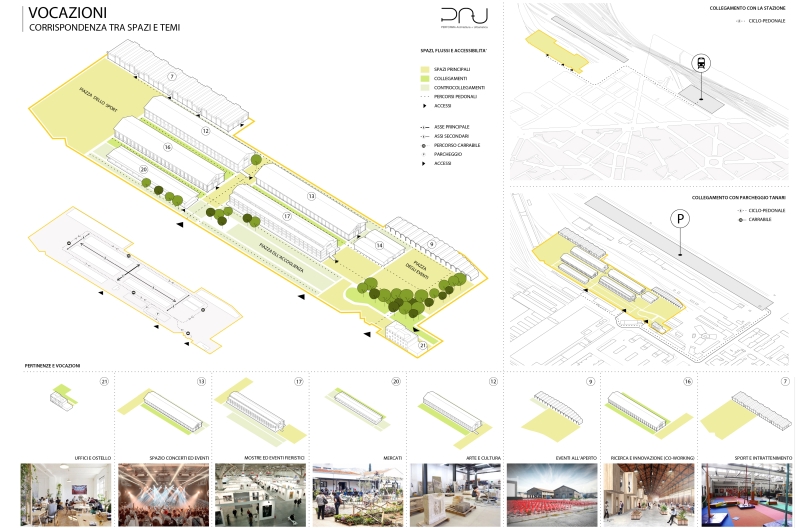
Fig.
3 - The conceptual axonometry of the section dedicated to the
exploration of new solutions, to be tested and possibly inserted in the
implementation phase of the Urban Implementation Plan (PUA), expresses
the sense of estrangement of vacant buildings in respect to the
anonymity of the surrounding Plan.
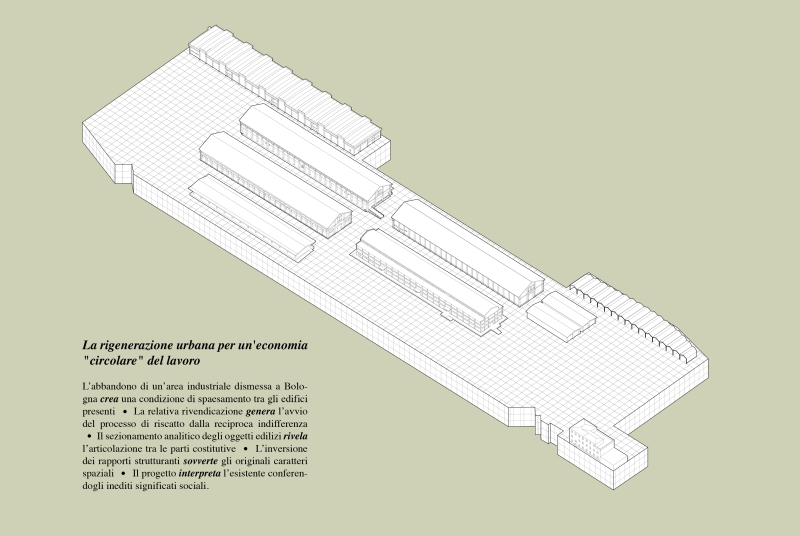
Fig.
4 - Warehouse no. 4, with its single hall plan, has an assembly
structure that lends itself well to the presentation of a new political
roster for the regional elections (obtaining the Vice President's
Office of Emilia-Romagna).
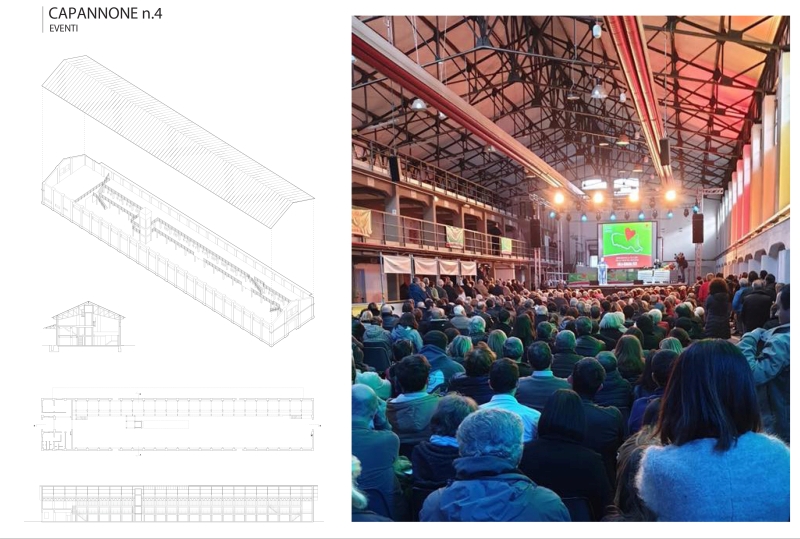
Fig.
5 - Warehouse no. 3, with a basilica structure, was temporarily
transformed into an exhibition space dedicated to hosting events from
the last edition of the International Art First / Art Fair.
